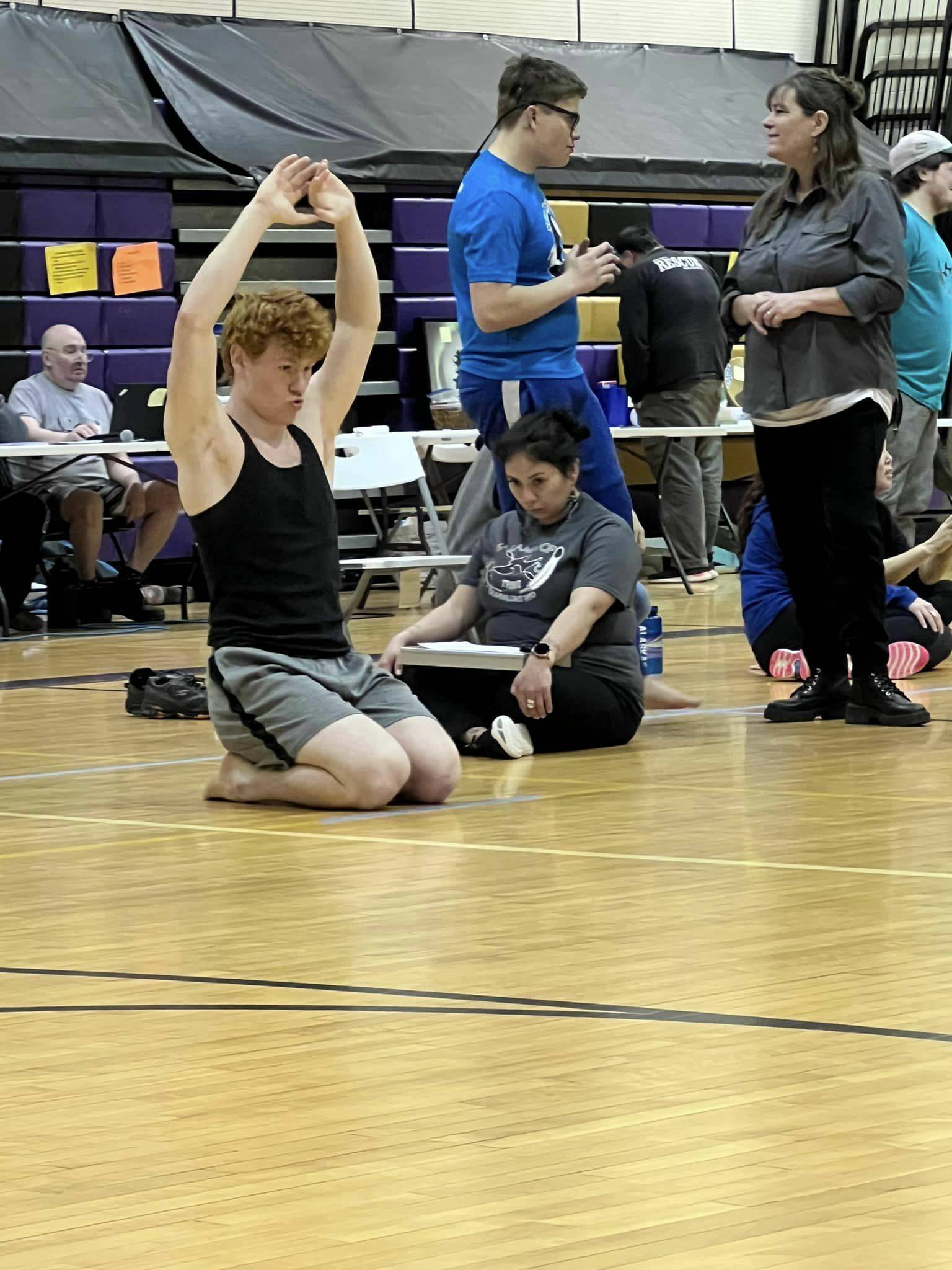The Homer Halibuts, local Native Youth Olympic team, will send eight athletes to the statewide meet in Anchorage this weekend.
Staged at the Alaska Airlines Center on the University of Alaska Anchorage campus, the state meet hosts students in first to 12th grades from across the state, including the Bristol Bay School District, Yukon-Koyukok School District, Savoonga, Valdez, Dillingham and Unalaska.
Homer coach Megan Gordon said that as of Monday 43 teams and 385 athletes were pre-registered for the event, but she expects as many as 500 athletes will compete.
“It’s pretty big,” she said. “It’s a great facility to host the event, too.”
She said there will be concessions, as well as cultural performance by the Wales Kingikmiut Dancers, and an afterparty for athletes, coaches and officials Saturday night.
The competition follows the 2nd Annual Salamatof Tribe Traditional Native Games Invitational, hosted last weekend at Kenai Middle School. The event stretched from Friday evening to Sunday afternoon, with 11 events split between both boys and girls and junior and senior divisions. Finalists from the competition will compete in Anchorage.
The Homer team met for a final practice at the various event stations in the Homer Middle School gymnasium on Tuesday evening. The team has been organized for five years with some closures due to COVID, though there were some virtual meets.
Senior Leah Evans will compete in the kneel jump, Indian stick pull and 1-foot high kick. Charity Gordon, freshman, competes in the Alaskan high kick and 2-foot high kick. Sage Laky, seventh grade, competes in the wrist carry. Rowan Matney, seventh grade, competes in the Eskimo stick pull, one-hand reach and seal hop. Molly Evans, seventh grade, competes in the scissor broad jump. Josiah Gordon, sophmore, competes in the wrist carrier and Eskimo stick pull. AJ Allowan, junior, competes in wrist carry and seal hop. Senior Elijah Gordon, competes in eight of the 10 events: kneel jump, wrist carrier, Alaskan high kick, scissor broad jump, one-hand reach, 2-foot high kick, Indian stick pull, 1-foot high kick and seal hop.
Competitors do not need to have Native heritage to participate; the event is inclusive to everyone.
Gordon, who, along with her husband, has been involved with the games for about eight years, said the meet events mimic tasks integral to a subsistence lifestyle.
“A lot of these events are pulled from hundreds of years of experience and a lot of the ways the games were created were ways to stay in shape for a subsistence lifestyle,” Gordon said.
For example, she said, the kneel jump or the scissor broad jump might “mimic the movements that you would need to get up quickly to move from something like ice while you’re crossing a river or ice when you’re hunting on the water and you need to jump to another piece of ice.
“Or, you’re out in the woods dealing with a moose or caribou harvest but you hear something behind you and you need to jump and run,” Gordon said.
Another example she gave was the wrist carry, designed to mimic the pain of frostbite.
“One of the things we’ve learned that’s specific to a coastal region, Kachemak Bay, if you’re out in an umiak and you fall in the water and your hands are cold, you might need to get back into the boat and strap the paddle to your wrist in order to row back to shore if you didn’t have any feeling in your fingers,” she said.
Another one of the Halibuts’ favorites is the Indian stick pull — it mimics picking fish.
“We have a tapered dowl greased with Crisco; that’s supposed to feel like fish slime. We’re trying to see who can have the best grip to get fish out of the net or fish wheel,” she said.
Gordon said she and her husband, Mark, learned from other coaches about the particulars of the games while officiating and score keeping. The team has also gained knowledge of individual skills by visiting villages and talking to Elders about “little tips and tricks” they have learned.
“Our kids have been out to Savoonga on St. Lawrence Island. The Elders loved to share the stories and the kids loved to hear it. In some of these places, a lot of these skills are really still applicable,” she said.
Teammates also share skills among themselves. At the Salamatof event, for example, Gordon said she saw senior athletes at their final competitions stepping up to coach the next set of athletes.
“It really felt like the seniors visibly stating, ‘This is it, it’s our last year, and we’ll coach you now. We’ll give you all of our insight to help you succeed’,” she said.


